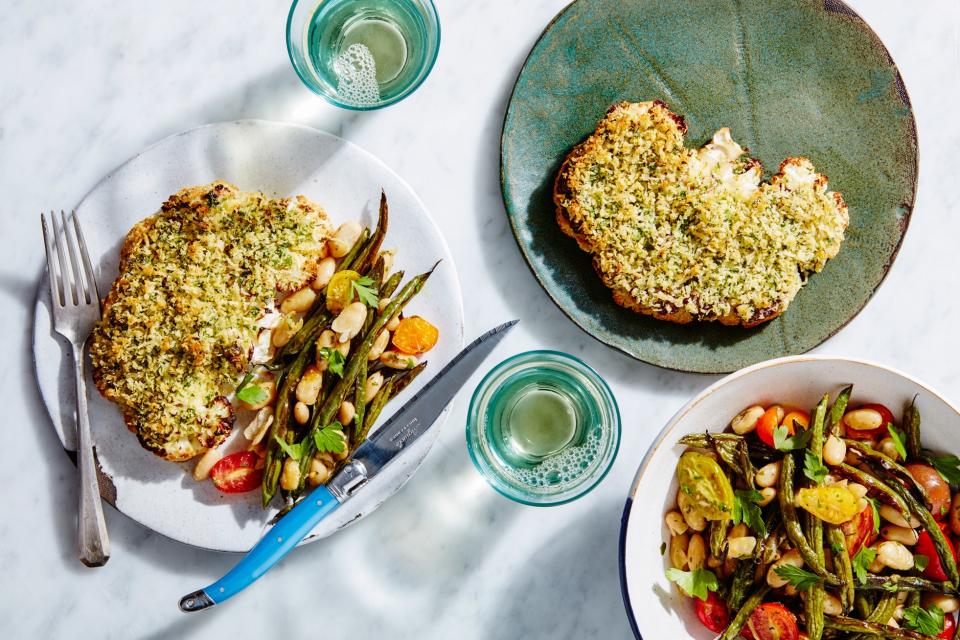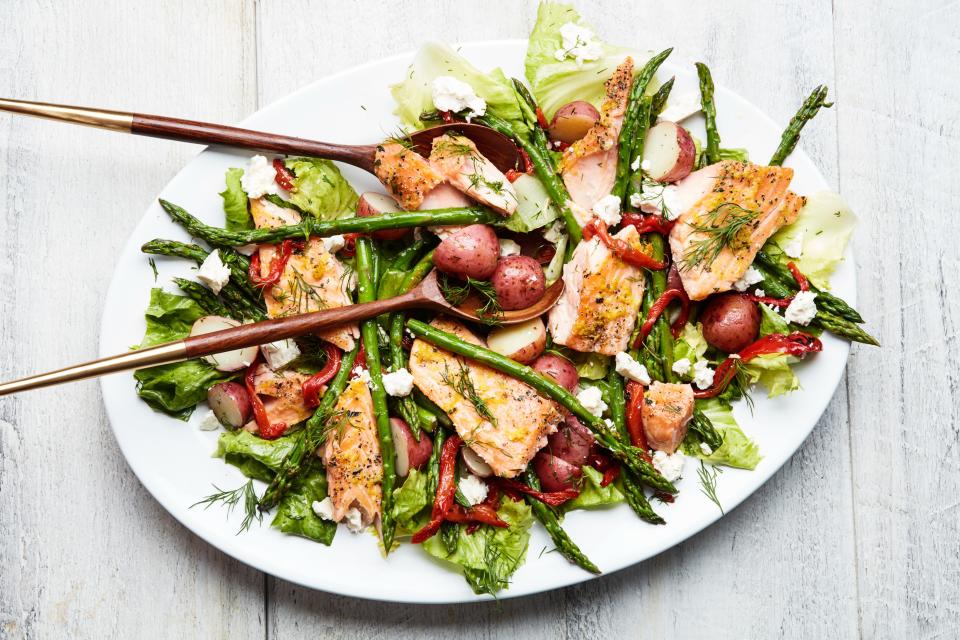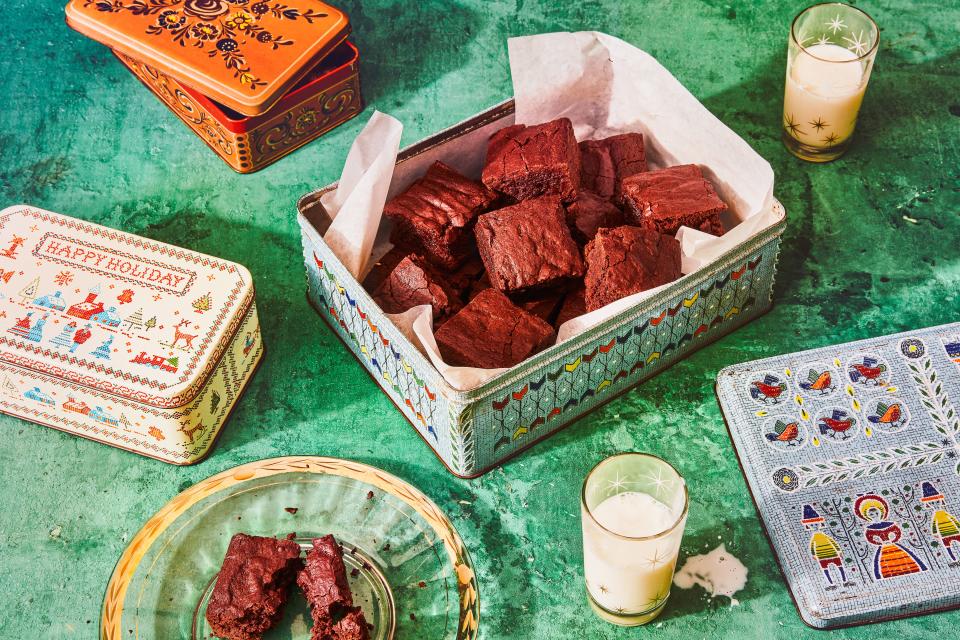Beer and Food Pairings: 16 Menu Ideas, Plus Tips to Create Your Own
Curious about the best beer and food pairings? You're not alone. For centuries, if you asked a restaurant server in any mid-range to upscale American eatery what drink to pair with a certain dish, he'd bring over the sommelier and a wine bottle negotiation would ensue. But in the last decade, there's been a paradigm shift: Beer has made it onto the menu as more than an afterthought.
Go ahead and have another—you can drink these beer cocktails all day without falling out of your beach chair.
Beverage directors, chefs, and even wine lovers have learned that beer has an amazing capacity to pair with all kinds of foods. As a result, beer sommeliers have popped up in cities across the country, especially Los Angeles, Chicago, New York, and Portland, Oregon. Beer-and-food tasting events have multiplied exponentially—the monthly lists at beerfestivals.org are enormous. Nowadays, asking for a beer no longer means you're simply afraid of wine (or the type of person who wears face paint to football games).
Beer may actually be more food-friendly than wine is. There is certainly more room for flavor variety. Winemakers, after all, have one ingredient to play with: grapes (two, if you count wood barrel–aging). Beermakers, on the other hand, can experiment with barley (which adds sweetness), hops (which provide bitterness), yeast (which lend that characteristic "bready" flavor), as well as spices, nuts, chocolate, fruits, and vegetables.
Here, a list of beer and food pairing menu ideas to help you plan your next dinner party (or what to order on your next night out!).
Ale
Pair with: Burgers; buffalo wings; Asian food; Mexican food; spicy food; nutty food; fried food; pizza; steaks; Cheddar, Parmesan, or Romano cheeses.
Recipes to try:
Bock Beer
Pair with: Gruyère, Emmental, and Swiss cheeses; Cajun food; jerk chicken; beef; sausage; seared foods.
Recipes to try:

Sheet Pan Herb-Crusted Cauliflower Steaks with White Beans and Green Beans Recipe
Photo by Chelsea Kyle, Food Styling by Katherine Sackstext in callout
Fruit Beer
Pair with: Mascarpone cheese; light white meat; foods driven by herbs and spices; duck and pork dishes with sweet components (avoid very tart lambics); pickled dishes (great with tart lambics); salads with fruity dressings; fruity desserts.
Recipes to try:
Lager Beer
Pair with: Shellfish; light seafood; sushi; grilled pork and chicken; not-too-heavy pasta dishes (without cream or meat sauces); Southeast Asian food; Latin food; Mexican food; spicy food.
Recipes to try:

Lemon-Roasted Salmon with Escarole, Asparagus, and Potatoes Salad
Photo by Chelsea Kyle, Food Styling by Anna Stockwelltext in callout
Pilsner Beer
Pair with: American cheese; Muenster, Havarti, and Monterey Jack cheeses; salads; light seafood; salmon; tuna; trout; asparagus; Asian food; Mexican food; spicy food.
Recipes to try:
Porter Beer
Pair with: Smoked foods; barbecue; sausage; rich stews; meats; bacon; chili; braised dishes.
Recipes to try:

Gingerbread Brownies
Photo by Chelsea Kyle, Prop Styling by Beatrice Chastka, Food Styling by Kat Boytsovatext in callout
Stout Beer
Pair with: Roasted foods; smoked foods; barbecued/grilled foods; salty foods; oysters; rich stews; braised dishes; chocolate; desserts (ideally the beer is sweeter than the dish).
Recipes to try:
Wheat Beer
Pair with: Light soups and salads; vegetarian dishes; sushi; Gruyère cheese and Feta/goat cheese; sweet and fruity Asian dishes; citrus-flavored dishes, including dessert and salad dressings.
Recipes to try:
5 Tips for Creating Food and Beer Pairings
Now that you have an idea of what pairs with what, let's explore more. If you want to take a deeper dive and start creating your own food and beer pairing ideas, here's what to consider.
1. Play with Complementary or Contrasting Flavors
Some chefs and sommeliers attempt to find commonalities, pairing, say, a spicy Thai dish with a spicy pale ale (could also be a fruit-fruit or chocolate-chocolate synchronization, etc.). The idea is that there is a pleasant echo. Notes in one sip evoke flavors in past or future bites. The opposite approach suggests that contrasting flavors are pleasing in a ying-yang sort of way: A dry, bitter stout classically pairs with oysters, perhaps "cutting through" the sweetness of the shellfish. Sweet and salty always work wonders. Remember that dominant food flavors can come from the protein (like beef), the sauce (such as a cream sauce), or the method of preparation (grilling, for example).
2. Compare Beers to Wine
Some people say lager is like white wine and ale is like red. A corollary of that concept: that beer hops (as in a nice bitter IPA) function like wine acids (found in, say, a Sauvignon Blanc or a Chianti) in food pairings. Both cut through fattiness and oiliness, and even saltiness. Imagine them both as providing the lemon in, or acid counterpoint to, a fish dish. These are oversimplifications, but there are a few fundamental differences between lager and ale (the two main types of beer) worth contemplating: Ales tend to be fruity and robust, while lagers are crisp and comparatively delicate.
In terms of body, there are three types of beer (like wine): light, medium, and heavy. Generally you can pair light dishes with light beer and heavy dishes with heavy beer. For reference:
Light Body
Wines: Sauvignon Blanc, Pinot Noir, Barbera, Pinot Grigio
Beers: Lager, Pilsner, Wheat
Medium Body
Wines: Merlot, Zinfandel, Syrah
Beers: Ale, IPA, Bock
Heavy Body
Wines: Cabernet Sauvignon, Malbec, Oaky Chardonnay
Beers: Stout, Porter, Barleywine
3. Pay Attention to Textures, Temperatures and Timing
Bubbles cut through fried and fatty foods, so opt for more carbonization when eating richer foods. Pizza, for example, is a greasy match made in heaven and requires something that will stand up to the acids in the tomato and cut through the fatty cheese but not overwhelm the dish. Stouts and porters are too heavy. Wheat beers might be a little light or fruity. Ales, pilsners, and lagers are your best bet: Hops stand up to the cheese, while bubbles cleanse the palate. Note that beer can taste syrupy if it's too warm. It's best served between 40°F and 50°F. (Note: some fridges get even colder than 40°F, so you might consider leaving a beer out for 15 minutes before serving.). Finally, timing really is everything. If you're pairing a whole meal with different beers, course by course, dish by dish, make sure to start with a light beer and work your way toward darker beers. If you don't, you may overwhelm your palate early on and miss some of the subtler notes and aromas of delicate beers.
4. Beware of Simply Matching the Region
Many people think if you're having Mexican food, it's a safe bet that a Mexican beer will pair well. The truth is: Most restaurants offer only a small selection of beers and mostly because that's what people are used to seeing on a menu. Mexican Tecate, Thai Singha, Indian Kingfisher, and Chinese Tsingtao are all great European pilsner-style beers, but they're not universal pairing solutions for all dishes from their respective countries. (Some of these brands are actually brewed in the U.S. or Canada anyway.) Beer experts advocate stronger and fruitier flavors when dining on spicy fare: ales, Hefeweizens, and wheat beers in particular. No matter what type of beer you choose, the coldness will feel good against hot food.
5. Drink What You Like
If you love pale ale, you'll probably like it with anything you eat. And you know what? There's nothing wrong with that. Experiment: There are no wrong answers.


